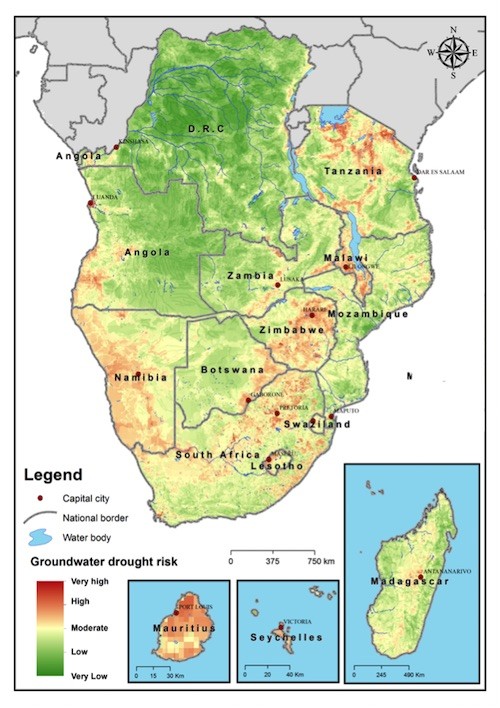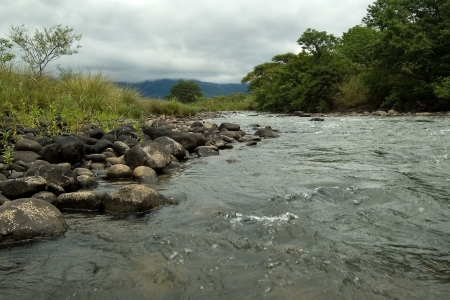Floods and droughts are the most economically and socially destructive of all natural disasters. They ruin crops, destroy livelihoods, damage economies. Quantifying the level of risk for individual locations can help equip local governments and inhabitants to handle the worst climate-related events that come their way.
Groundwater plays a critical role in the Southern African Development Community (SADC) region, especially in arid and semi-arid areas, where it provides relatively drought-proof water supplies for domestic as well as productive uses (livestock, agriculture, mining, tourism, etc.). It is estimated that 70% of the population in the region depends on groundwater (SADC 2012). Drought resilience is strongly linked to access to groundwater, and proper development and management of this resource.
IWMI used an integrated management support tool called GRiMMS to assess and map the groundwater drought risk in the Southern Africa region. Groundwater drought risk refers to diminished groundwater access and availability.

The mapping analysis was based on relative indices of meteorological drought risk, hydrogeological drought proneness and human vulnerability to groundwater drought. The indicators were superimposed and mathematically combined through a simple algorithm and scheme that weighted their relative importance.
The final map highlighted the areas with the highest groundwater drought risk. A total of 39 million people in the region were at risk at the time of the mapping. Models suggest that climate change will exacerbate groundwater drought risk.
The mapping tool can be used by developers, researchers, policymakers and donors to help inform and support better drought management and groundwater development in Africa.
The tool can help identify potentially vulnerable areas and populations during and after prolonged drought, areas where groundwater resources and recharge are limited, and areas where population density and groundwater dependency are relatively high.













